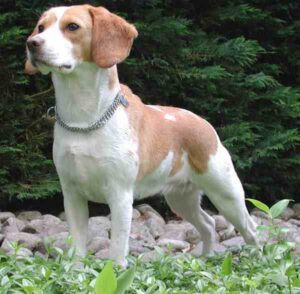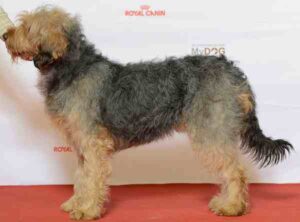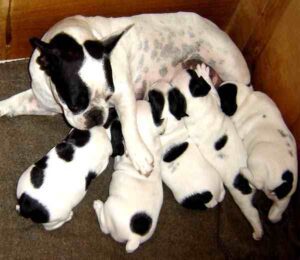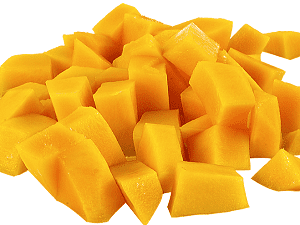The Cretan Hound is a hunting breed of dog from the island of Crete, in Greece. It is considered to be one of the oldest hunting breeds in Europe, with a history that goes back to 3,500 years ago. It is also known by some other names such as Kritikos Lagonikos, Kressa Kyon, Kritikos Ichnilatis and it’s common nickname is “Ntopio“.
The Cretan Hound is a multi-talented dog breed that comes directly from Crete. Excellent scent, speed, agility and durability of this breed make it an exceptional hunter. The breed also has guarding instincts as well as pastoral instincts.
It is a primitive hunting breed, and it’s existence on the Greek island of Crete is documented in writing and artifacts for at least 3500 years.
The breed was extensively cultivated and used by the Minoan civilization which, at it’s peak, dominated over most part of the Aegean, the Cyclades islands and eastern peloponesus.
As a tracking and coursing hound, it was always used in chasing and catching hare and wild rabbits on the harsh terrains of it’s native island.
The Cretan Hound is currently recognized in its country of origin by the KCG, the Kennel Club of Greece.[1]
Cretan Hound Characteristics
The Cretan Hounds are medium in size and they are very beautiful. The long, slender body, wedge-shaped head, pricked ears, prominent hip bones and curved, bushy tail are some of the breed’s most distinctive features.
This breed is a slender dog, somewhere in the middle between a scenthound and a sighthound in body, particularly light on it’s feet and strong in loin. They are specially adopted for swift reflexes and high speed over dangerous, rocky terrain.
The head of the Cretan Hound is wedge-shaped, elongated and dry, with pricked and very mobile ears that fold backwards like a greyhound’s during the chase.
The tail of this breed is a most important characteristic. The tail is long and curved upwards, forming a loose or tight ring and covered with a brush of longer hair underneath.
The breed is slightly longer than tall, with medium angulations, slender legs and good muscle. The ribcage is spacious but neither too broad nor too rounded and it does not quite reach the point of elbow.
The loin is slender yet powerful and there is good tuck-up, with the points of the hipbones slightly prominent.
There should be a balance between characteristics of speed and stamina, the conformation being a compromise producing great agility.
Common colors of the Cretan Hound breed can range from pure white, cream, grey, brindle or black, bi-colored, sandy, fawn or tri-colored.
Average body height of the mature dog is between 20 and 24 inches at the withers for males, and between 20 and 23 inches for the females. Average live body weight of the mature dogs is between 15 and 22 kg.

Temperament
The Cretan Hound is highly fatalistic in the hunt, and is equally meek, noble and polite otherwise. These dogs are extremely swift, elegant and nimble in their movements.
It is an extremely well behaved dog and good for lovely companions, having a tender and docile attitude towards children.
They generally do not bark much, they are prompt at alerting their owners on sensing a threat. For the same reason, they make for good watchdogs despite their inherent lack of aggression.
The Cretan Hounds can live harmoniously with other pets when raised with them. However, due to their instinctive hunting tendency, they cannot be trusted around small animals or neighborhood cats.
Lifespan
Average lifespan of the Cretan Hound is 14 years, sometimes even more.
Feeding
How much a mature dog eats depends on it’s size, age, build, metabolism and activity level. Dogs are individuals, just like people, and they don’t all need the same amount of food.
The Cretan Hounds are medium in size, but they are very active. So, their diet should be formulated for a medium sized breed with high exercise needs. You can consult with a vet in your area for better feeding recommendations.
Caring
Taking good care of the animals is very important for raising Cretan Hounds. You should always keep up with your dog’s regular veterinary checkups to detect any health concerns early. Your vet will be able to help you to develop a caring routine that will keep your dog healthy.
The Cretan Hounds are highly active, and they have high exercise requirements. And the breed is best suited to homes with a large garden or backyard. An hour long walk or playtime will be enough to meet their exercise needs.
They are highly obedient and intelligent. They are eager to please, and respond best to positive and consistent training tactics.
You must train your dog to follow certain essential commands. And always reward the dog when it obeys your commands.
Socialize the dog well with strangers from an early age to prevent it from becoming overly reserved or anxious in the company of strangers.
Owing to its minimal grooming requirements, brushing its fine, short haired coat 1-2 times a week with a firm bristle brush will suffice. The breed requires dry shampooing occasionally. It is best to use a mild soap while giving it a bath.
Check the feet, mouth and ears of the breed on a regular basis and trim its nails whenever the need arises.
Health
The Cretan Hounds are generally healthy. But like all other dog breeds, they are also prone to certain health conditions.
Their common health problems include hip dysplasia, ear infections, anesthesia allergies and Progressive Retinal Atrophy. Always try to keep good contact with a vet in your area.
| Breed Name | Cretan Hound |
| Other Names | Also known by some other names such as Kritikos Lagonikos, Kressa Kyon, Kritikos Ichnilatis and it’s common nickname is “Ntopio” |
| Breed Size | Medium |
| Height | Between 20 and 24 inches at the withers for males, and between 20 and 23 inches for the females |
| Weight | Between 15 and 22 kg |
| Good as Pets | Yes |
| Climate Tolerance | All climates |
| Color | Solid, particolor or tricolor |
| Lifespan | Average 14 years or more |
| Good for Children | Yes |
| Rarity | Common |
| Country/Place of Origin | Greece |






